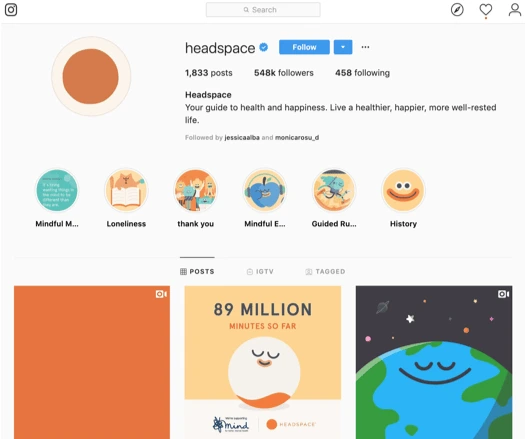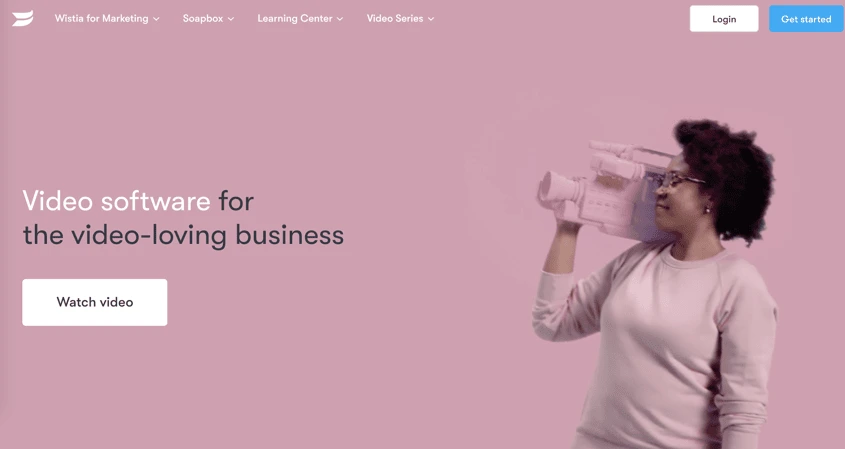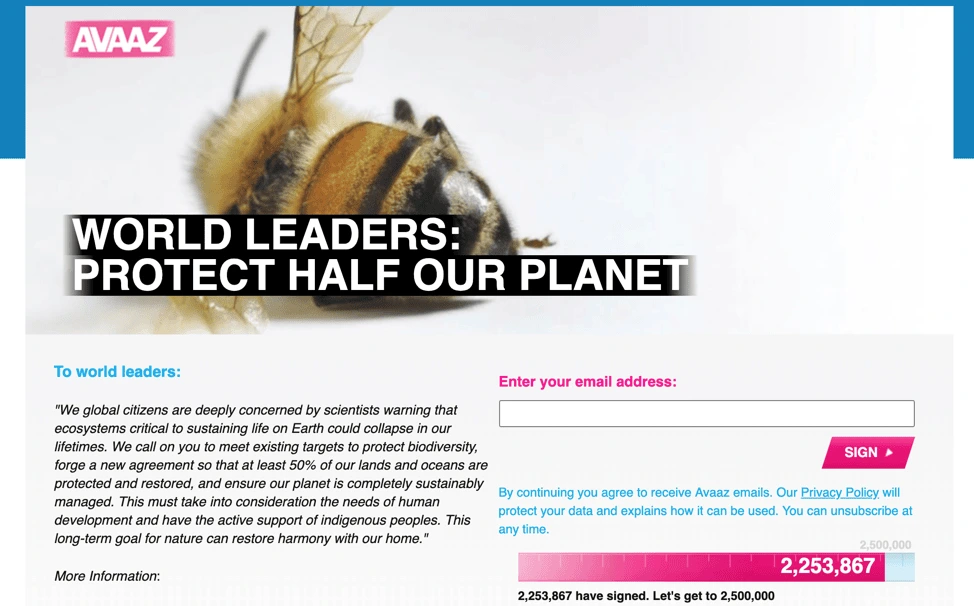Someone who cares.
When it comes down to life essentials, that’s all us humans need besides food, water, and shelter.
Our need for connection is wired into our brain because our own survival depends on it. As a result, we respond to and connect with other people who satisfy this fundamental need of ours.
Related: Brand archetypes — Which of these 12 brand archetypes fit your brand?
There’s a big opportunity for brands to differentiate themselves not by being “the best” or “the first”, but the ones who care the most.
Is your company’s mission driven by the desire to help and support others?
If this your dominant characteristic, consider embracing the caregiver brand archetype. As the examples below reveal, there’s a lot you can achieve by growing into this narrative.
Does your brand fit the caregiver archetype?
As customers, we have an inevitable tendency to personify brands. This goes to show just how strong our need for emotional connection is.
If your brand personality already favors building relationships instead of coldly communicating product features, then you are already on track to become a caregiver.
Specifically, the characteristics of the caregiver archetype include:
- Sustained focus on the customers’ needs that’s visible throughout the company
- A proclivity for volunteering time, energy, and resources to assisting customers
- The ability to notice when someone needs help and the ability to provide it
- A responsible and benevolent way of conducting business
- A constructive approach to community involvement
- A track record of dependability and being supportive of others.
Traditionally, these traits have been associated with NGOs, but there are several commercial brands that are true caregivers too.
In recent years, an increasing number of companies have grown based on these exact features. This strong foundation allowed them to develop a strong, recognizable brand with clarity and confidence.
The caregiver archetype examples below show exactly how they achieved this.
Truthful brand positioning has a ripple effect
We long for loving, secure relationships not only with people, but with other entities we interact. The more we depend on a company — for our water, safe travels or most sensitive data, the more we need to be able to trust it.
Organisations that embrace the caregiver archetype inspire trust due to their brand mission to help, protect, and care for others in ways they cannot do so themselves.
For example, Johnson & Johnson articulate mission clearly on their about page: “130 Years of Caring”.

In 2018, Johnson’s Baby (no affiliation with J&J) launched a campaign called “Choose gentle” that states their commitment to a similar idea:
“We believe in the immense, transformative power of gentle. Gentle is something the world can’t ever have too much of. #ChooseGentle”

P&G taps into similar values to articulate their mission:
“We will provide branded products and services of superior quality and value that improve the lives of the world’s consumers, now and for generations to come.”
Another brand from the same industry, Honest, tells their story along the same lines:
“Our story began with a simple desire: to make the right choices for our families. We were parents in search of safe options, but unsure of where to turn. We needed one brand that we could go to for trusted products and information. And when we couldn’t find what we were looking for — and realized we weren’t alone — the idea for Honest was born.”
As you can notice, brands that fit the caregiver archetype seek to inspire others to act on the same nurturing tendencies. They do so by acting on their brand values and operating from a posture of:
- Generosity
- Humility
- Empathy
- Compassion
- Trust
- Kindness
- Openness
- Optimism
- Transparency
- Integrity
NGOs are the best equipped to harness the power of this brand archetype in a significant, impactful way.
Unicef’s USP — “For every child” — speaks to their dedication of working to improve the wellbeing of children around the world.
“We campaign for a world where human rights are enjoyed by all” states Amnesty International, pointing to the bigger picture and inspiring others to join their pursuit.
The Bill & Melinda Gates Foundation has a similar position dedicated to selfless service:
“All Lives Have Equal Valuewe are impatient optimists working to reduce inequity”
For a caregiving brand, the core strategy is to do things for others. This can mean facilitating shared experiences or aligning people around common ideals. Also, this brand archetype excels at creating a feeling of belonging to something greater than oneself.
In this context, you can also achieve more clarity by assign a role for your brand to play in the market or in the community. You can be:
- An altruist
- A nurturer
- An advocate
- A helper
- A supporter
- Or even a mentor.
Developing your caregiver features can prove especially powerful for new brands seeking to build a recognizable personality. It can be equally helpful to companies trying to break out of their industry and reach a wider audience.
Being a constantly nurturing, supportive company creates a strong, consistent brand that customers are excited to endorse. That’s because these characteristics appeal to the universal values deeply embedded into our humanity.
Caregiver brands are good for everyone
When your company embodies the caregiver archetype, it:
- Fosters authentic connections between the brand and its customers and partners
- Builds loyalty among customers, reducing churn, and cultivating a constant interest in your products and services
- Empowers vocal advocates that carry your message forward and generates word-of-mouth promotion
- Lowers your cost of acquisition based on empathy and affinity for your brand
- Creates long-term value by helping people make better choices and care about others.
To achieve these goals, pay attention to your brand voice. The caregiver is usually considerate, thoughtful, kind, positive, calm, and supportive. Can you identify these features in your communication?
Next, evaluate your visual identity. Do your color scheme, font choices, and layouts create experiences that reflect kindness and gentle understanding?
For example, Headspace — “Your guide to health and happiness” — breathes positivity into their users’ lives through their website, app, and all channels they use for communication.



As you can see, their branding is remarkably consistent, albeit adapted to each channel’s specific communication style.
Another equally captivating example is Wistia, whose brand positioning empowers their customers to thrive: “Create, host, share, and measure your videos like the human you are. ?”.


Their branding is colorful but in a gentle, inviting way that combines feelings of calm and excitement in a way that feels healthy and balanced.
Wistia has also been recognized for their exceptional customer service which goes to strengthen their brand’s focus on helping others succeed.
Loyal followers will amplify your mission
Being a caregiver brand gives your customers a competitive advantage that’s associated with a powerful positive message.
Whether through shows kindness or empowering people to care for themselves, you will most likely attract people who value connection.
Those who have a lot of responsibility will naturally gravitate towards your brand as their tendency to look after other people is stronger.
If you make these customers feel loved, safe, taken care of, they will soon become thankful for your support. Nurturing that feeling of “we’re in this together” can lead to them becoming strong advocates for your mission who carry your message to their own circles of influence.
For example, The Salvation Army is top of mind for those who want to extend a helping hand to people across the world. When it comes to donations, they are also the first to come to mind.
Volvo launched in early 2019 the E.V.A. initiative which entailed sharing over 40 years of their own safety research so other car manufacturers can provide an equal level of safety for both men and women (who are at a disadvantage).

To make it easier for your followers to share your call to action, make sure you provide them with up to date, eye-catching brand assets they can use on their own channels.
Visuals always work best, especially when you combine them with a clear and compelling message. AVAAZ does a great job at this:

Ready to embrace the caregiver brand archetype and make the most of your resources to help others?
Start by unifying your communication around a clear set of values that will guide your strategy. Choose the role you want your brand to play in your community. Give it a voice, using words, visual assets, text and/or audio, and start attracting more loyal customers and supporters.
Strengthening your relationship with them puts you on a growth path that greatly benefits from the compound effect these acts of kindness have on everyone’s lives.



